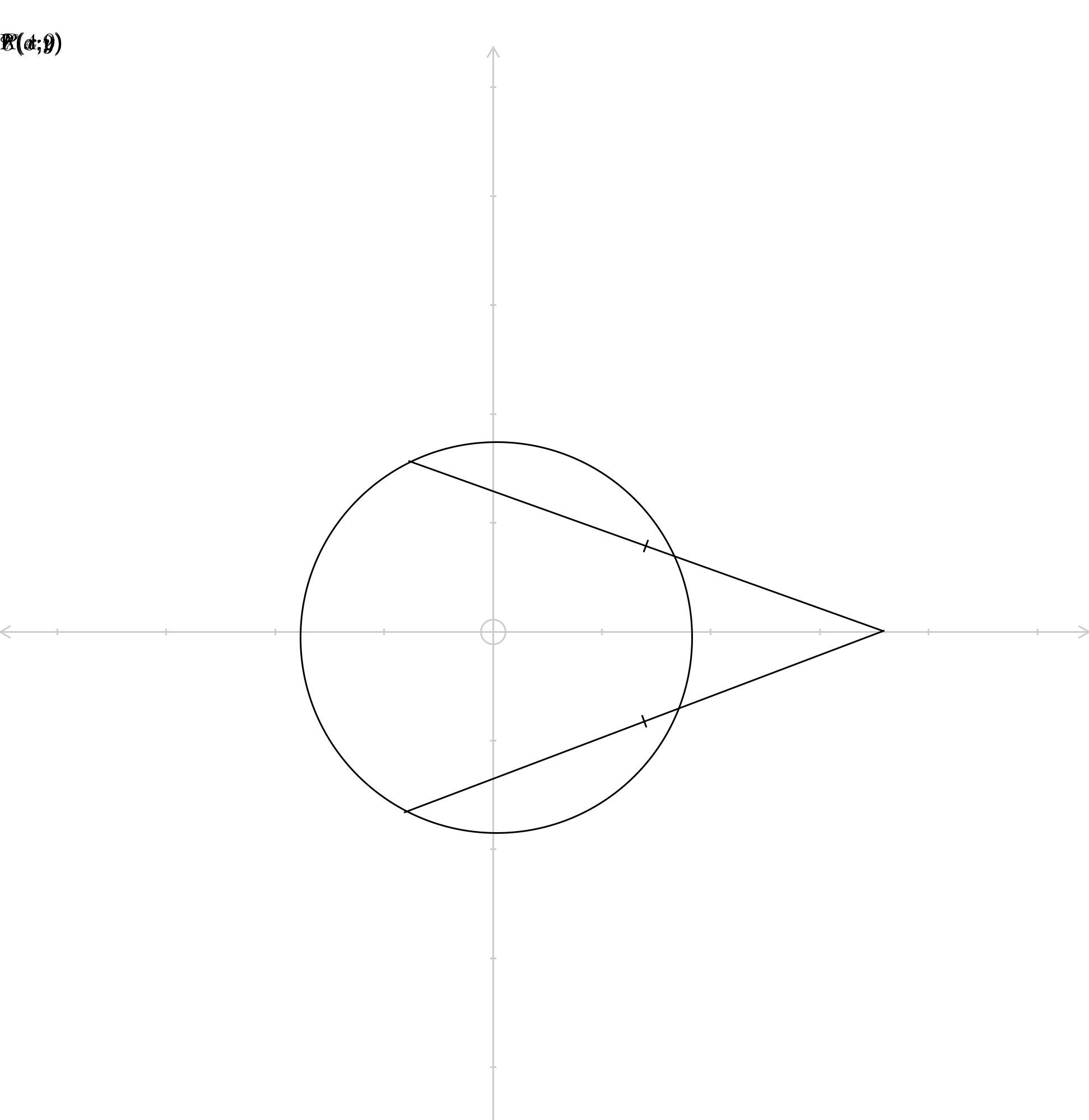
Question and Answers Forum
Question Number 109305 by peter frank last updated on 22/Aug/20

Answered by Aziztisffola last updated on 22/Aug/20
![let A(4;0) and P(x;y)∈C(o;2) ⇒x^2 +y^2 =4 ⇒ y=+_− (√(4−x^2 )) let I be center of [AP] I(((x+4)/2);((√(4−x^2 ))/2)) ∧ I(((x+4)/2);−((√(4−x^2 ))/2))](Q109323.png)
Commented by Aziztisffola last updated on 22/Aug/20

Answered by 1549442205PVT last updated on 22/Aug/20
![P(x_1 ,y_1 )∈(O,2)⇒x_1 ^2 +y_1 ^2 =4⇒y_1 =±(√(4−x^2 )) ⇒P(x_1 ,±(√(4−x_1 ^2 ))),I −midpoint of AP (since by the hypothesis AI:AP=1:2) since A(4,0),we have I(((x_1 +4)/2),((±(√(4−x_1 ^2 )))/2)) If denote by (x,y)−the coordinates of the point I then we have { ((x=((x_1 +4)/2) (1))),((y=((±(√(4−x_1 ^2 )))/2) (2))) :} From (2) we get (2y)^2 =4−x_1 ^2 ⇒4−x_1 ^2 =4y^2 ⇒x_1 ^2 =4(1−y^2 )(3) From (1) we get x_1 ^2 =(2x−4)^2 =[2(x−2)]^2 =4(x−2)^2 (4) From (3)and (4)we get 1−y^2 =(x−2)^2 ⇔(x−2)^2 +y^2 =1 This shows that the point I runs on the circle with the centre having the cordinates be (2,0) and the radius equal to 1 when P remove on (O,2)](Q109331.png)
Commented by peter frank last updated on 05/Oct/20

